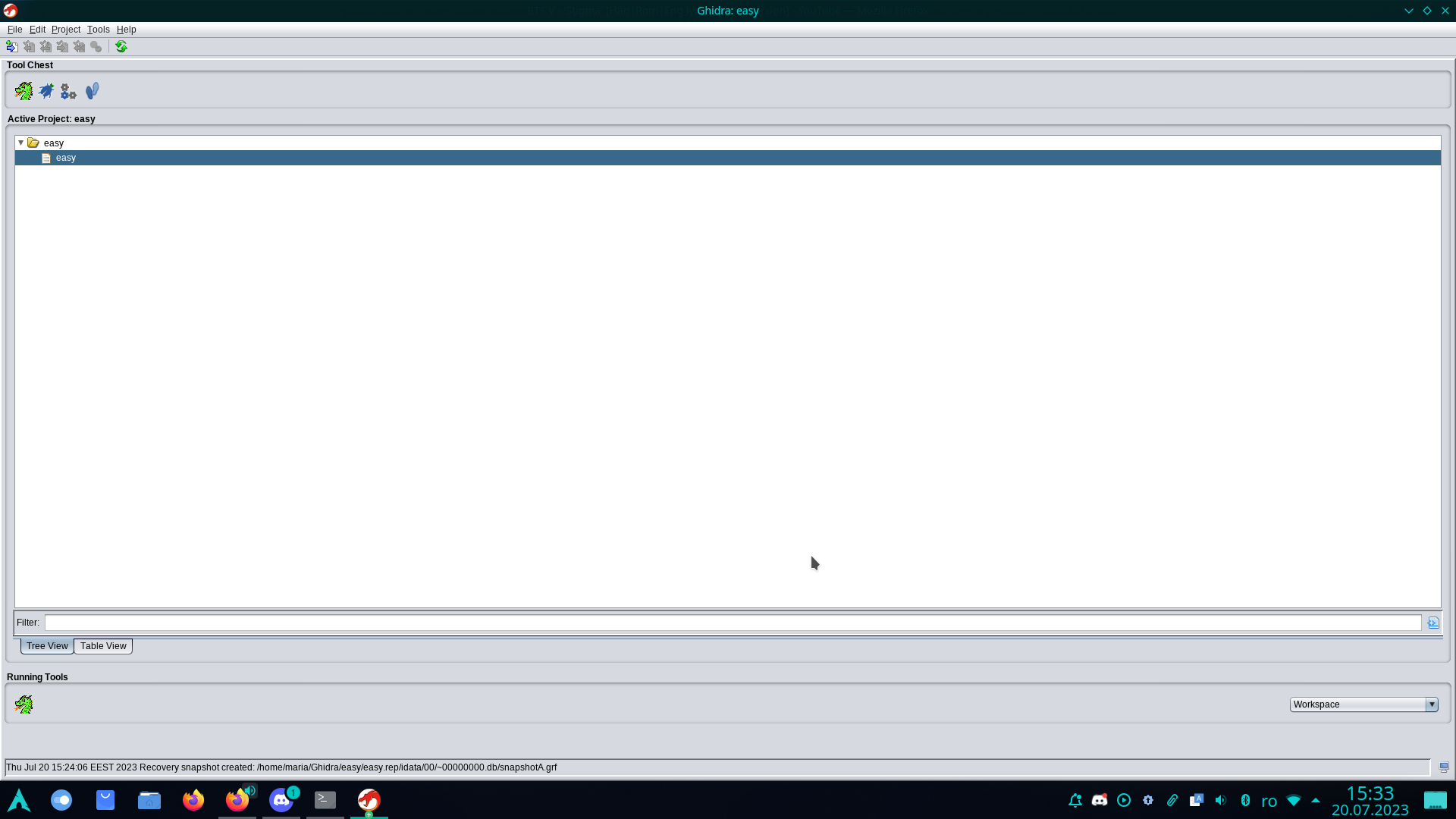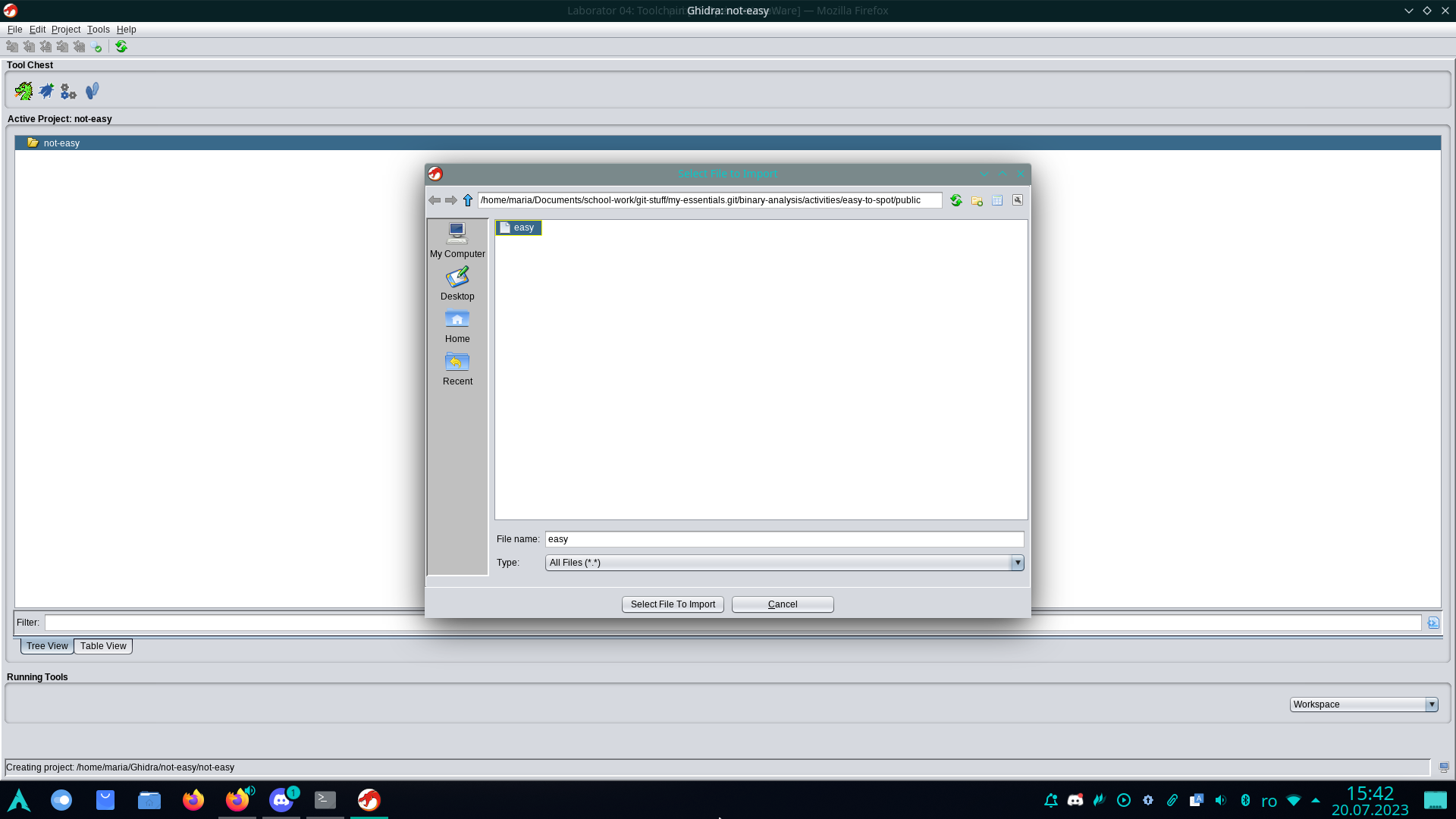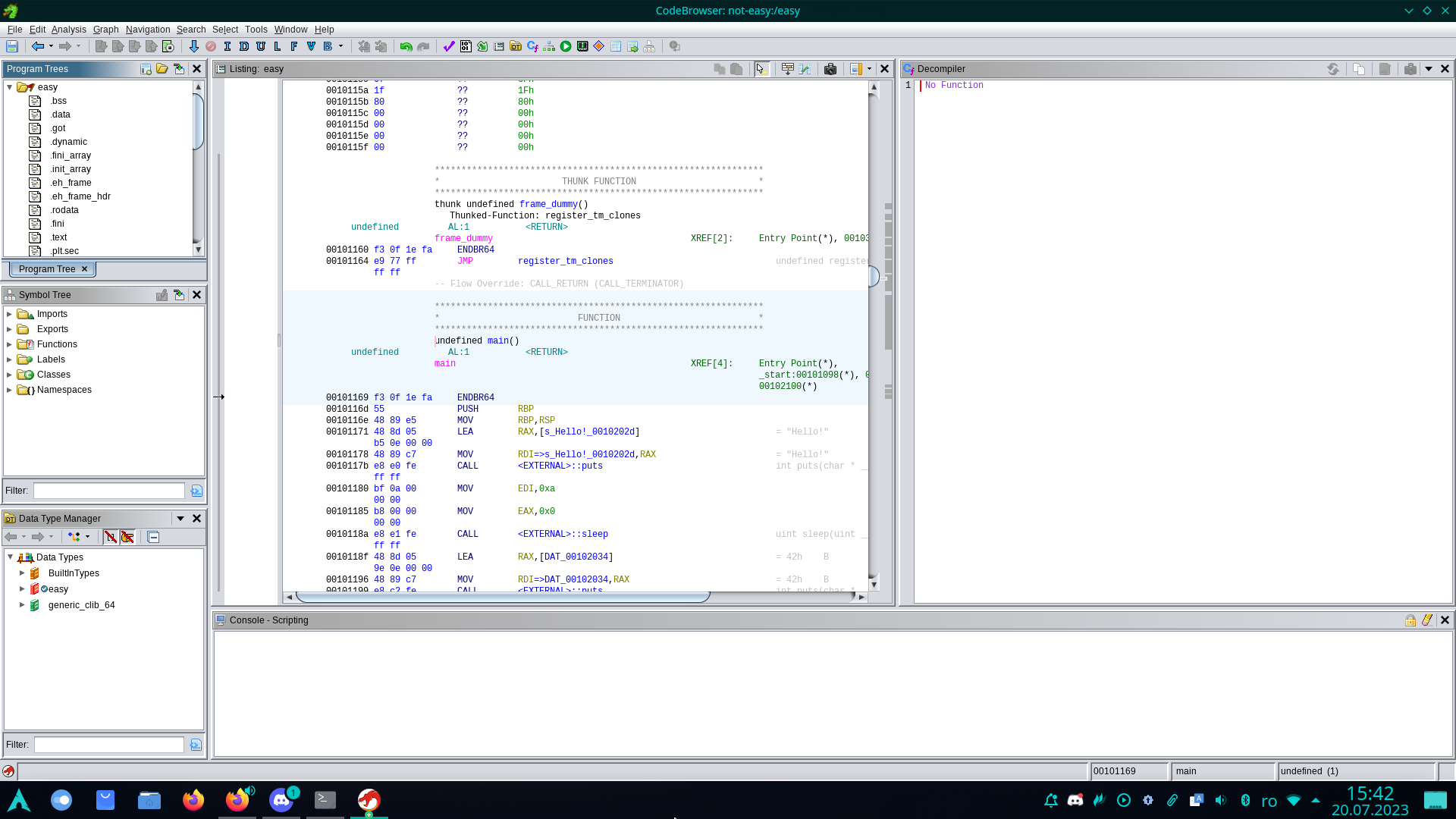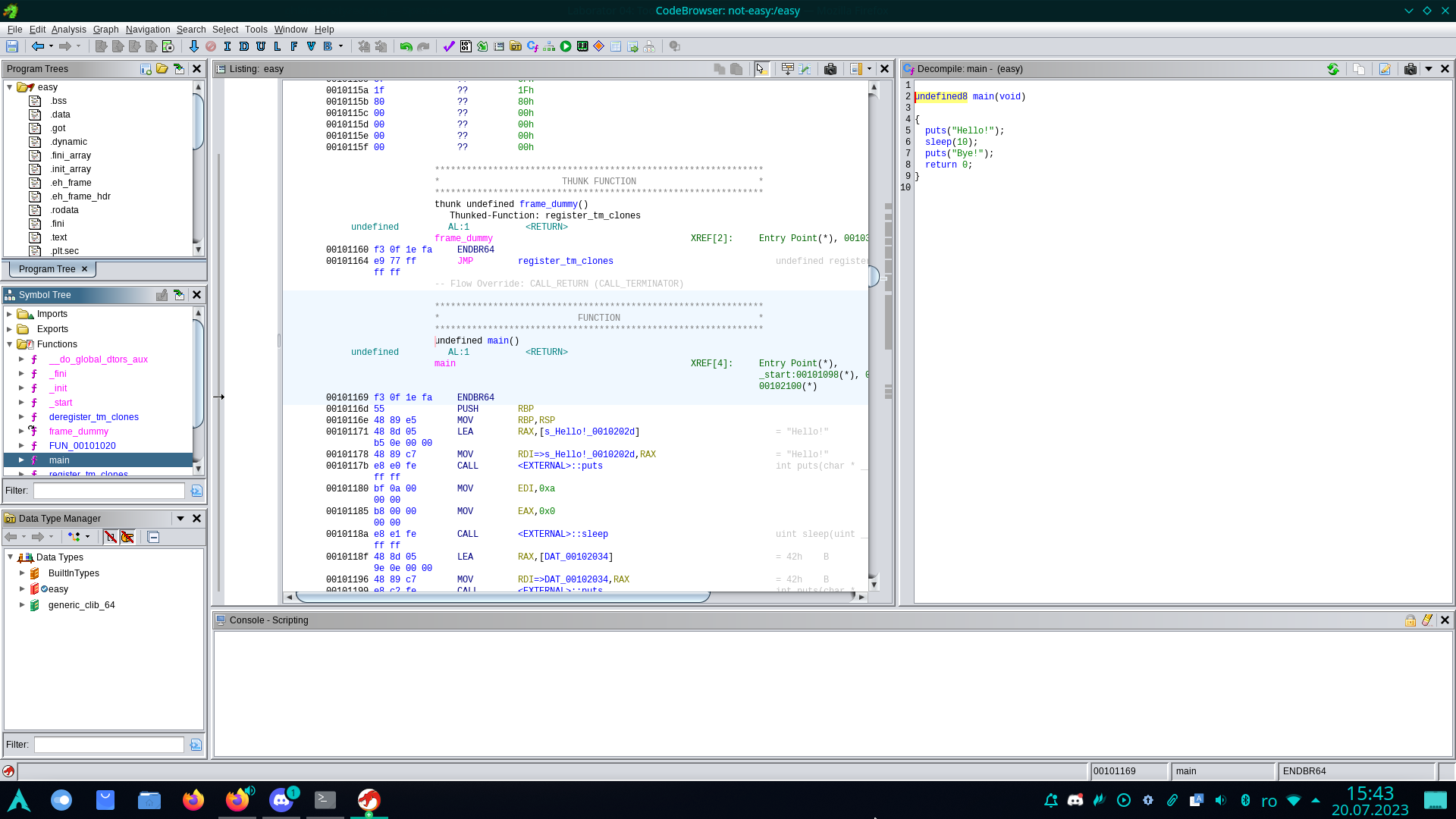Ghidra Tutorial: Decompiling
In this tutorial, we aim to show how to analyze the functionality of a simple binary that prompts for the input of a correct password to obtain a secret value.
WARNING: In order to run Ghidra, access a terminal window and use the
ghidracommand.
Initially, when we run Ghidra, a window will appear showing our current projects.

We can create a new project and give it a suitable name.
To do this, we will use: File → New Project (or using the keyboard shortcut CTRL + N).

After creating the project, to add the executable file, we can use File → Import file, or drag the file into the directory we created.
Ghidra will suggest the detected format and the compiler used.
In more special cases, we may need to change these configurations, but for the purpose of this tutorial, Ghidra's suggestions are perfect.

The next step is to analyze the imported binary.
We can double-click on it.
Ghidra will ask us if we want to analyze it.
To do this, we will click Yes and then Analyze.

After the executable has been analyzed, Ghidra displays an interpretation of the binary information, which includes the disassembled code of the program.
Next, for example, we can try to decompile a function.
In the left part of the window, we have the Symbol Tree section;
if we open Functions, we can see that Ghidra has detected certain functions, including the main function in the case of this binary.
Therefore, if we double-click on main, the decompiled main function appears on the right, and in the central window, we see the corresponding assembly code.

We will notice that the decompiled code is not an exact representation of the source code from the file crackme.c, but it gives us a fairly good idea of how it works and looks.
Looking at the decompiled code, we notice that the main function has two long-type parameters named param_1 and param_2, instead of the normal prototype main(int argc, char *argv[]).
The second parameter of main is of type "vector of pointers to character data" (which is generically interpreted as "array of strings").
Below is a generic perspective on how the vector is represented for a 64-bit system.
In the representation on the second line, argp should be understood as char *argp = (char *)argv in order for the calculation argp + N to make sense.
| argv[0] | argv[1] | argv[2] |
|---|---|---|
| argp | argp + 8 | argp + 16 |
The difference in parameter types of the main function is due to interpretation: the binary is compiled for the amd64 architecture (which is an extension of the x86 architecture for 64-bit systems), and the size of a
processor word
is 8 bytes (or 64 bits).
The size of a processor word is reflected in the size of a pointer and also in the size of a single parameter (if the parameter is smaller than a word, it is automatically extended to the size of a word).
Additionally, by coincidence, the size of a variable of type long is also 64 bits (the sizes of
data types
in C are not well-defined, only some lower limits for data types are defined).
This causes the interpretation of both parameters as long, as all parameters, regardless of type (int or pointer), are manipulated identically.
The calculation param_2 + 8 is used to calculate the address of the second pointer in the argv vector (that is, argv[1]).
For a program compiled for the 32-bit x86 architecture, the address of argv[1] would have been param_2 + 4.
Using the information from the decompiled code, we can infer that the program expects a password as an argument, and it must be 8 characters long, with the character at position 3 being 'E' (the first character is at position zero).